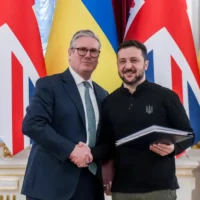Brussels (Brussels Morning Newspaper) – As part of a new initiative, Estonia is seeking to get fellow EU nations to agree to seize frozen Russian assets and utilise them to support Ukraine, opposing a Russian idea on how the money could be employed as part of a peace deal.
Estonia has sent a discussion paper on the matter to EU members and will raise it at a gathering of EU foreign ministers in Brussels, officials stated.
According to Reuters, the Estonian paper attempts to address its partners’ concerns. It states asset seizure can be explained under international law as a countermeasure to Moscow’s war because “Russia refuses to engage in reparations”. It also states joint effort by the European Union and international allies could mitigate any threat to the euro as a reserve currency.
The decision to use the windfall profits was a step in the right direction. I see that the time is ripe now to take the next step,
Estonian Foreign Minister Margus Tsahkna explained to Reuters.
What concerns do EU nations have about the proposal?
Earlier, it came to light that Moscow could agree to let Russian assets frozen in Europe be employed for reconstruction in Ukraine but would demand part of the money be spent on the part of the country handled by its forces. Tsahkna rejected that argument.
Giving Russia some of the assets to use in the occupied areas means accepting Russia’s occupation of some parts of Ukraine,
he said.
The European Union has urged Ukraine’s territorial integrity must be respected in any peace agreement. Several EU nations, including Baltic countries and Poland, have stated they are ready to seize the assets. But France, Germany, Belgium and the European Central Bank have been cautious, cautioning of legal challenges and damaging the euro as a reserve currency.
Belgium-based clearing house Euroclear carries most of the Russian assets frozen in Europe.
A total of 210 billion euros in Russian assets are blocked in the EU by sanctions as a feature of an international clampdown on Russia for its 2022 attack on Ukraine. Last year, the G7 group of countries, including the European Union, decided to utilise profits from frozen Russian assets to back a $50 billion loan for Ukraine.



